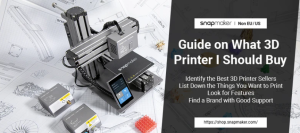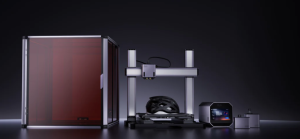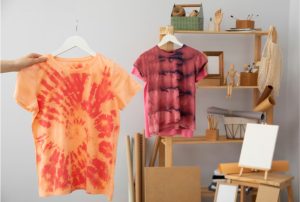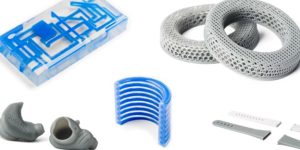Rapid technological advancements have brought about changes in various industries, and 3D Printing is undoubtedly one of the most intriguing innovations of recent times. Also known as additive manufacturing, 3D Printing has transcended its industrial roots and is now making its mark in homes, unleashing boundless possibilities for creativity and innovation. Keep on reading to understand what is a 3D printer.
3D Printing is a process that creates three-dimensional objects from a digital model. This layer-by-layer approach enables the creation of intricate and complex designs that were previously challenging or impossible to achieve through conventional methods.
The process of 3D Printing involves a few key steps:
- 3D printer designs: A 3D model is created using computer-aided design (CAD) software or obtained from online repositories. The model is sliced into thin horizontal layers using slicing software, which generates instructions for the printer.
- Printing: The 3D printer reads the instructions and begins printing. It deposits material, often plastic filament, layer by layer to build the object. Various printing technologies exist, including Fused Deposition Modeling (FDM), Stereolithography (SLA), and Selective Laser Sintering (SLS), each with its unique approach to material deposition.
- Solidification: Depending on the printer type, the deposited material is solidified through cooling, curing with UV light, or melting and fusing with lasers.
- Completion: Once the object is fully printed, it may require post-processing steps like cleaning, sanding, or painting to achieve the desired finish.
Benefits of using 3D Printers at Home
The advent of affordable and user-friendly 3D printers has opened up possibilities for home users:
- Customization: Personalized creations are at your fingertips. You can design and print items tailored to your preferences, from phone cases to gifts.
- Learning Tool: 3D printers are excellent educational tools. They enable hands-on learning of design and even basic programming principles.
- Rapid Prototyping: For hobbyists and inventors, 3D Printing allows the quick iteration of prototypes, saving time and resources during the design process.
- Home Decor: Create unique home decor items, like lampshades, vases, or sculptures, giving your living space a distinctive touch.
- Repairs and Replacement Parts: Broken household items can be given a second life by printing replacement parts instead of replacing the whole item.
Diverse Designs Achievable with 3D Printers
The range of 3D printer designs possible with 3D Printing is astounding:
- Functional Objects: Print everyday tools, kitchen gadgets, and holders that simplify daily tasks.
- Artistic Creations: Artists can turn digital designs into physical sculptures and pieces, pushing traditional art forms’ boundaries.
- Mechanical Parts: Create custom gears, hinges, and other intricate mechanical components for DIY projects.
- Cosplay and Props: Enthusiasts of cosplay and prop-making can craft detailed costumes and accessories.
- Architectural Models: Architects and students can bring their architectural designs to life with detailed scale models.
Cost of a Home 3D Printer
The cost of home 3D printers varies widely based on factors like brand, features, and printing capabilities. Entry-level 3D printers for beginners can start at around $200 to $300. These printers are often compact and offer basic functionality, making them suitable for beginners and simple projects.
As you move up the price range, usually between $500 and $1000, you can find printers with larger build volumes, higher print quality, and additional features like touchscreen interfaces or dual extruders for multi-material Printing. These mid-range printers are well-suited for hobbyists and more experienced users.
For professionals or enthusiasts seeking even greater precision and advanced features or industrial-grade materials, high-end 3D printers can cost anywhere from $ 1,000 to $ 2,000.
3D Printing has evolved from an industrial process to an accessible technology that empowers individuals to unleash their creativity and innovation. The additive manufacturing process, where objects are built layer by layer, offers numerous benefits. The diverse designs achievable with 3D printers span a wide range of applications. As 3D Printing continues to evolve, imagining the new horizons it will open for innovation and self-expression is exciting.





